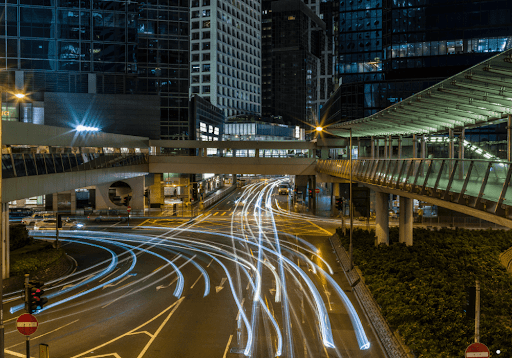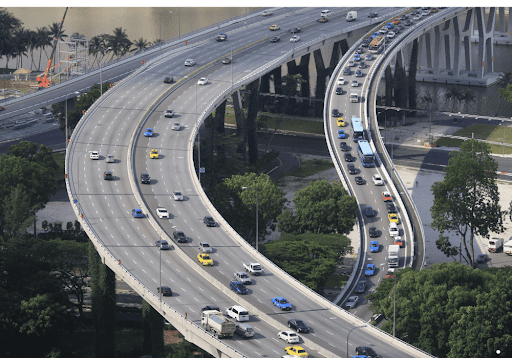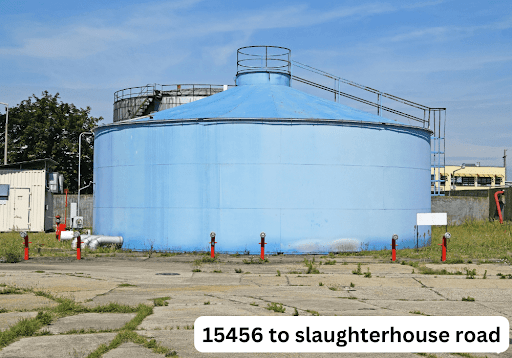The route from 15456 to Slaughterhouse Road may sound like the premise of a suspense novel or horror film, but in reality, it is a road steeped in local history, rural development, and cultural significance. With a name that invokes images of dark histories, Slaughterhouse Road raises many questions, and those curious enough to follow the journey discover more than just a macabre title.
In this article, we’ll unravel the intrigue surrounding Slaughterhouse Road, exploring its history, the community it serves, and the changing landscape between these two endpoints. Whether you’re a local resident, traveler, or someone captivated by curious road names, this in-depth look offers a deeper understanding of what 15456 to Slaughterhouse Road represents.
The Mysterious Origins of Slaughterhouse Road
Slaughterhouse Road, as the name suggests, evokes a visceral image tied to butchery and industrial slaughterhouses. But where does the name come from, and is there any truth behind the grim imagery it conjures?
Historically, many roads were named after the industries or major landmarks they connected to. In the case of Slaughterhouse Road, it likely traces its name back to a time when livestock farming was a significant industry in the area. Before refrigeration and modern logistics, local slaughterhouses were essential to small communities, processing meat that was consumed in the region. The road likely led to, or passed through, a working slaughterhouse or a farming district known for cattle or pig production.
The exact history of the slaughterhouses once found on or near this road has been lost in time, but older locals may remember the smells and sounds that permeated the air when the slaughterhouses were operational.
The Route from 15456: Mapping the Path
If you’re trying to plot the route from 15456 to Slaughterhouse Road, one might wonder what these numbers signify. While 15456 may seem like an address, it could also represent a ZIP code, mile marker, or specific waypoint on a larger route.
Travelers seeking to trace this journey will likely traverse a mix of rural landscapes, urban sprawl, and industrial zones. This route serves as a metaphor for the shifting identities of small towns and rural communities over the past few decades. What was once farmland may now be suburban housing developments. What was once a bustling industrial area may now be a quieter residential space.
For GPS and map users, 15456 to Slaughterhouse Road could lead through unexpected detours—small, winding backroads or larger highways that stretch for miles. The real intrigue lies in what you discover along the way.
Communities along Slaughterhouse Road: A Snapshot

The communities connected by this road tell stories of resilience, change, and history. As the world shifted from agricultural to industrial, and now to technological development, many small towns have either adapted or faded away.
Along the route, one might pass through small towns where main streets feel frozen in time, juxtaposed against newer housing developments and commercial spaces. Despite modern developments, remnants of the past are often visible—abandoned barns, aged buildings, and fading signs of industries long gone.
Each community along this road has its own identity, often influenced by larger cities or regional developments. While the slaughterhouses of the past may be gone, new businesses, schools, and recreational areas have sprung up, representing the future while acknowledging the past.
The Evolving Landscape: From Farms to Urbanization
At the heart of the journey from 15456 to Slaughterhouse Road is the evolving landscape of rural and semi-rural America. What was once a region dotted with family farms and agricultural enterprises is now increasingly marked by urban sprawl.
In the 20th century, many regions in the U.S. saw their agricultural lands decline due to industrialization and the rise of suburbs. The same is likely true of the area surrounding Slaughterhouse Road. What were once fields dedicated to livestock or crops may now be parking lots, shopping malls, or housing complexes.
Despite the encroachment of development, there remain pockets of farmland, forests, and open space that offer a glimpse into the area’s rural past. Many residents hold tight to this heritage, creating a unique tension between old and new.
Wildlife and Natural Habitats Along the Route
One of the benefits of traveling along less congested roads like Slaughterhouse Road is the proximity to nature. Even with development, many rural roads cut through forests, fields, and wetlands, providing habitats for local wildlife.
Those driving this route might spot deer grazing at dawn or dusk, hear the songs of various birds, or even come across more elusive animals like foxes or raccoons. For outdoor enthusiasts, there are opportunities for hiking, birdwatching, or simply enjoying the natural beauty that still thrives in parts of the countryside.
Many natural preserves or local parks may dot the area around the route, offering a reprieve from the fast-paced development seen elsewhere.
Historical Landmarks and Sites of Interest
Traveling from 15456 to Slaughterhouse Road might not be as straightforward as one imagines, and along the way, there are likely historical landmarks worth exploring. These could include old mills, historic homes, or sites where notable events took place.
Some of these landmarks may be tied to the history of local agriculture, early settlements, or even the industrial revolution that reshaped rural America. Travelers with an interest in history could take small detours to explore these sites and get a sense of the area’s past.
Local Legends and Myths: The Road’s Dark Reputation
With a name like Slaughterhouse Road, it’s no surprise that many local legends and ghost stories have sprung up over the years. In many small towns, roads with ominous names become the backdrop for ghost stories, urban legends, and tall tales.
Some locals might recount stories of haunted slaughterhouses, apparitions of former workers, or strange occurrences that happen late at night. Whether or not there’s any truth to these tales, they add a layer of intrigue to the journey. For those with an interest in the paranormal, the road may offer the opportunity to explore these local legends more closely.
The Impact of Development on Local Infrastructure

As more people move from cities to rural or semi-rural areas, local infrastructure has had to evolve to accommodate the growing population. Roads like Slaughterhouse Road, which may have once only seen a few cars a day, now handle more traffic. With increased development, roads may be widened, and new highways might be built, transforming once-quiet rural routes into bustling thoroughfares.
This change brings with it challenges. Traffic congestion, environmental concerns, and the strain on local services all factor into the broader conversation about development. For longtime residents, these changes can feel like an encroachment on their way of life.
The Future of Slaughterhouse Road: Preservation vs. Progress
As more people discover the route from 15456 to Slaughterhouse Road, a debate emerges about the future of the area. Should development continue at its current pace, or should there be more efforts to preserve the rural character of the region?
Preservation efforts may involve limiting development, protecting natural areas, or even renaming roads to better reflect the current reality of the communities. However, progress and development often seem inevitable, especially as cities continue to expand.
Local Culture and Traditions: Holding on to the Past
Despite the changing landscape, many communities along this route still hold tightly to their traditions and local culture. Fairs, festivals, and community gatherings continue to be held, celebrating the agricultural past and the unique identity of the area.
A Traveler’s Guide: What to See and Do Along the Way
If you’re planning to travel the route from 15456 to Slaughterhouse Road, there are plenty of activities and sights to enjoy. From small-town diners and antique shops to outdoor activities like hiking and fishing, the area offers a range of experiences for every kind of traveler.
Navigating the Road: Tips for Travelers
Before setting out on this journey, it’s essential to plan ahead. Whether you’re using GPS or following a more old-fashioned map, the route may include unmarked roads, detours, or construction zones. It’s also a good idea to check weather conditions, as some rural roads may be more difficult to navigate during certain times of the year.
Exploring the Region’s Culinary Scene
Many towns along the route from 15456 to Slaughterhouse Road offer regional delicacies, often rooted in the area’s agricultural past. Whether you’re interested in fresh farm-to-table meals, classic diners, or homemade baked goods, there’s plenty to enjoy.
Stories from Locals: First-Hand Accounts of the Road’s History
Perhaps the best way to learn about Slaughterhouse Road is through the stories of those who have lived along it. Many older residents can share memories of what the road used to be like, offering insight into its transformation over the years. Their stories add a personal dimension to the road’s history, giving travelers a deeper connection to the places they pass through.
Final Thoughts: The Legacy of Slaughterhouse Road
Slaughterhouse Road may have an ominous name, but the journey from 15456 to Slaughterhouse Road is one that reveals much more than meets the eye. It’s a road rich in history, culture, and the ongoing evolution of rural America.
Frequently Asked Questions (FAQs)
Is Slaughterhouse Road named after a real slaughterhouse?
Yes, Slaughterhouse Road likely got its name from a time when slaughterhouses operated in the area, reflecting the agricultural and industrial past of the region.
What kind of wildlife can be seen along Slaughterhouse Road?
Travelers might spot deer, foxes, and various bird species along the road, particularly in areas where natural habitats remain intact.
Is there a historical significance to the number 15456?
The number 15456 could refer to an address, ZIP code, or other location-based identifier, though its specific significance may vary depending on the region.
Are there any haunted places along Slaughterhouse Road?
Local legends suggest that the road is haunted, with stories of ghostly apparitions tied to its slaughterhouse past, but these remain unverified.
How long is the route from 15456 to Slaughterhouse Road?
The exact length of the route depends on where 15456 is located, but it typically involves a mix of rural and suburban roads.




